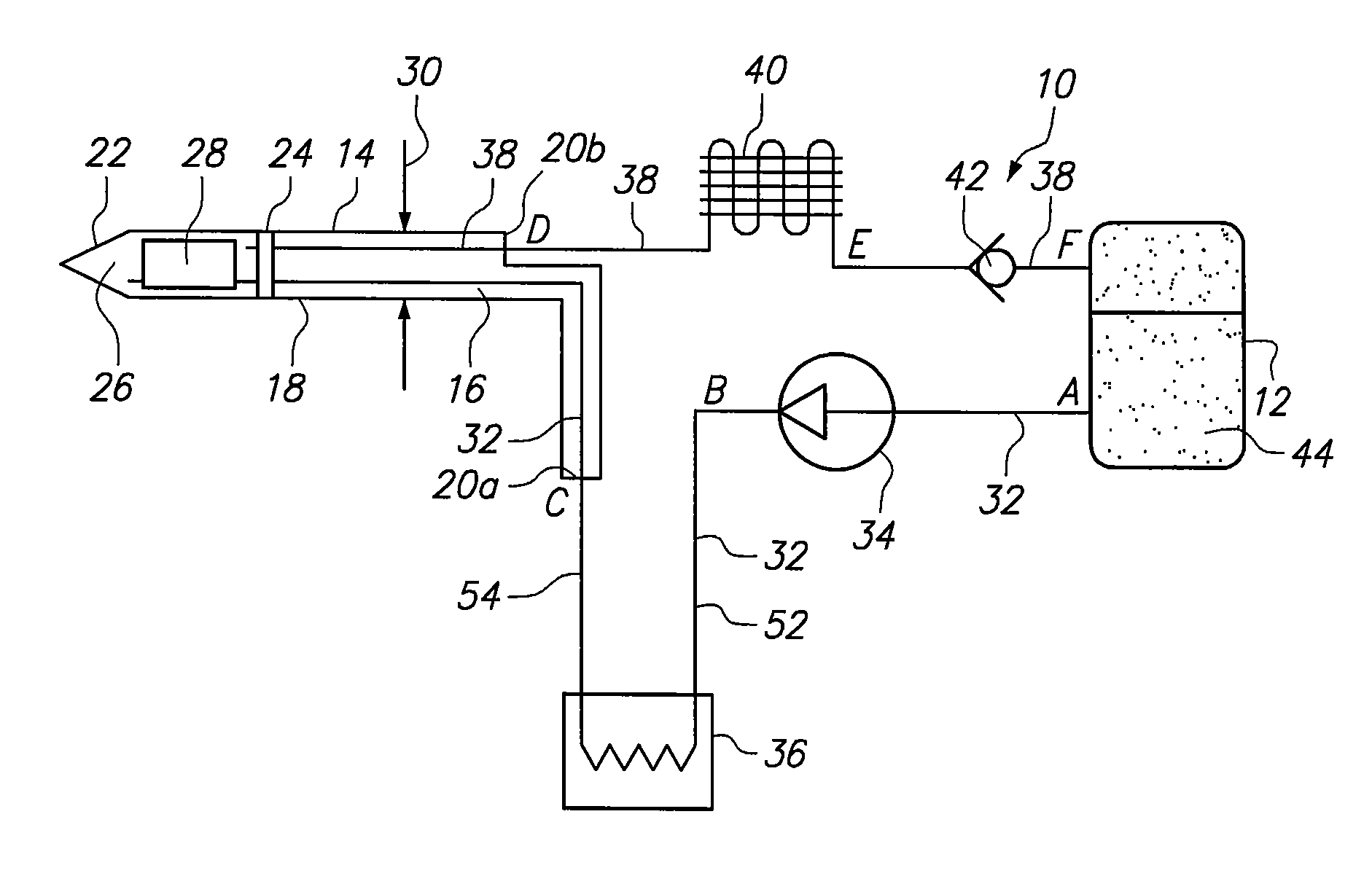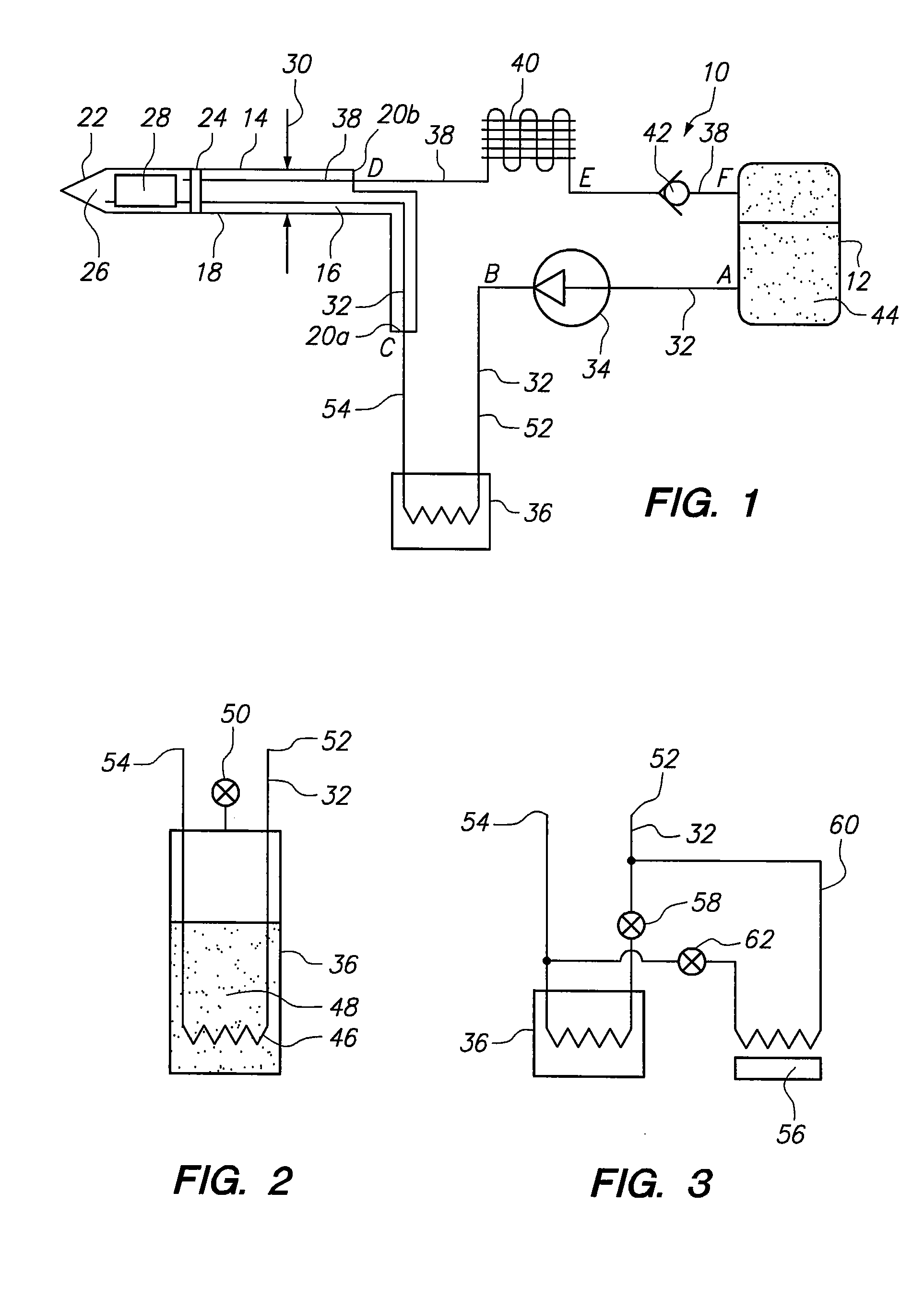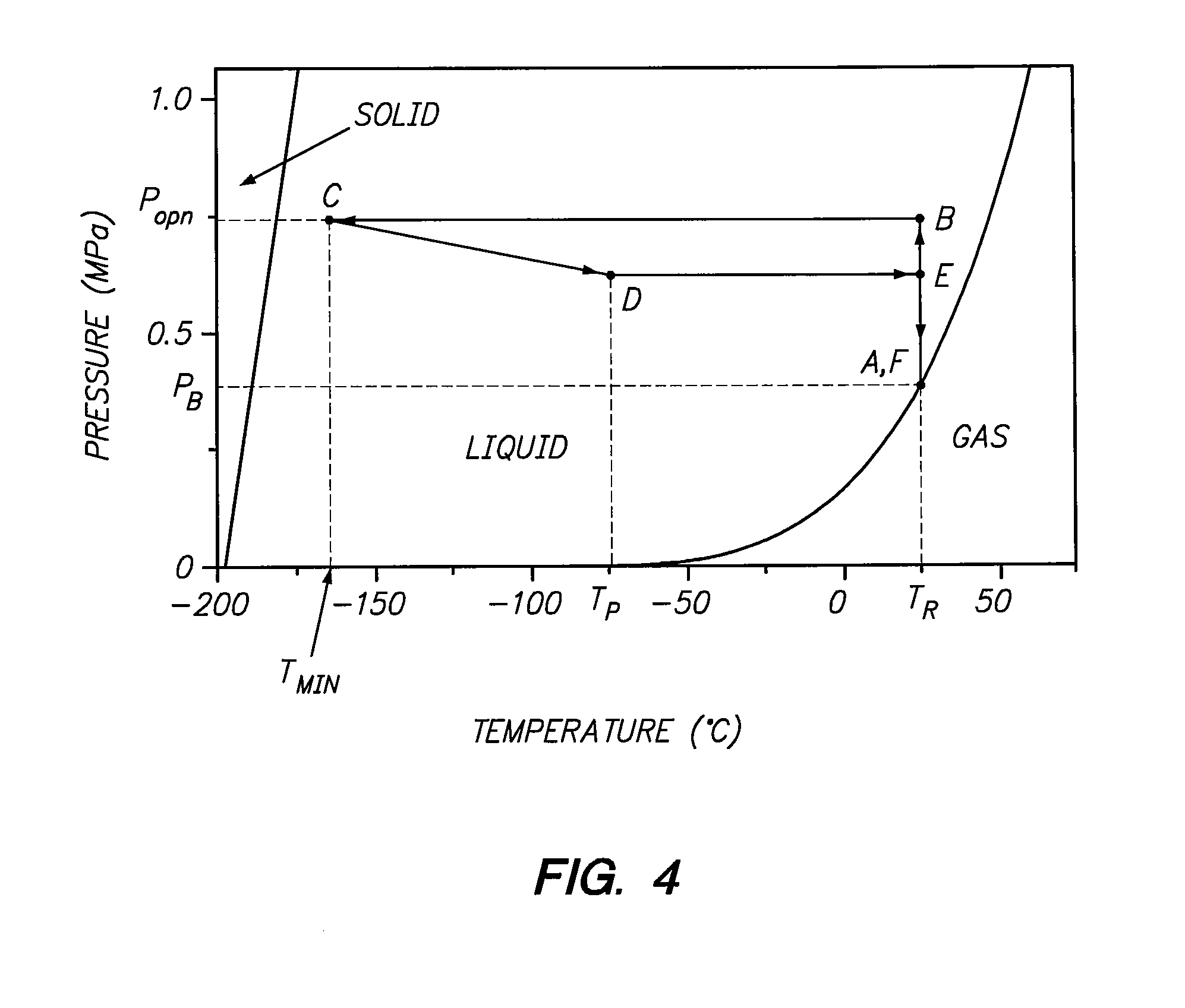Method and System for Cryoablation Treatment
a technology of cryoablation and treatment method, which is applied in the field of cryosurgical treatment method and system, can solve the problems of vapor lock effect, cloud of condensate, and current cooling system and method based on the use of liquid nitrogen as a means to cool a miniature probe tip,
- Summary
- Abstract
- Description
- Claims
- Application Information
AI Technical Summary
Benefits of technology
Problems solved by technology
Method used
Image
Examples
Embodiment Construction
[0025]Referring initially to FIG. 1, a system for performing a cryosurgical procedure in accordance with the present invention is shown and is generally designated 10. As shown, the system 10 essentially includes a liquid container 12 and a cryoprobe 14. In detail, the cryoprobe 14 includes a substantially tubular shaped vacuum shell 16 having a distal end 18 and a proximal end 20. For purposes to be disclosed in greater detail below, the proximal end 20 may be bifurcated into separate proximal ends 20a and 20b. In any event, the cryoprobe 14 will also include a cryotip 22 that is affixed to a plug 24 at the distal end 18 of the vacuum shell 16. Structurally, the cryotip 22 is formed with a liquid-tight chamber 26, and a turbulator 28 may be positioned inside the liquid-tight chamber 26. As indicated in FIG. 1, the outside diameter 30 of the cryoprobe 14 is substantially the same for both the vacuum shell 16 and the cryotip 22 and is, preferably, less than 3 mm.
[0026]FIG. 1 also sho...
PUM
 Login to View More
Login to View More Abstract
Description
Claims
Application Information
 Login to View More
Login to View More - R&D
- Intellectual Property
- Life Sciences
- Materials
- Tech Scout
- Unparalleled Data Quality
- Higher Quality Content
- 60% Fewer Hallucinations
Browse by: Latest US Patents, China's latest patents, Technical Efficacy Thesaurus, Application Domain, Technology Topic, Popular Technical Reports.
© 2025 PatSnap. All rights reserved.Legal|Privacy policy|Modern Slavery Act Transparency Statement|Sitemap|About US| Contact US: help@patsnap.com



